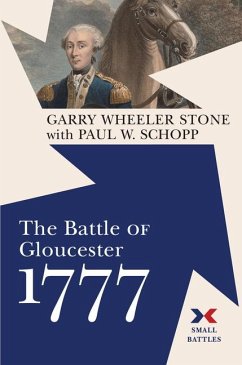The Marquis de Lafayette, a nineteen-year-old French youth, arrived in Philadelphia at the end of July 1777. Introduced to George Washington, he joined the commander-in-chief at the Battle of Brandywine in September, where he proved that he was courageous. Soon after, the British occupied Philadelphia and prepared to control the Delaware River, vital as a supply route. In November, the marquis volunteered to go to New Jersey with Major General Nathanael Greene and a detachment sent to defend Fort Mercer, a Delaware River fort controlling shipping access to Philadelphia. The Continentals were unable to reach Fort Mercer in time to save it, but Lafayette had ridden ahead of Greene to reconnoiter. He discovered a 350-man picket of German riflemen (jägers) guarding Cornwallis's camp, and with ten light dragoons, 150 riflemen from Daniel Morgan's Rifle Corps, and perhaps 200 New Jersey militia, he attacked. In forty-five minutes, Lafayette's little band drove the jägers back two and a half miles, almost to Cornwallis's camp. When the news of Lafayette's small victory reached the Continental Congress at York, Pennsylvania, the delegates were elated--this was the only good news amid the gloom over the loss of Philadelphia and control of the Delaware River. In The Battle of Gloucester, 1777, archaeological historian Garry Wheeler Stone, with the assistance of historian Paul W. Schopp, recreates this minor but important clash during the Philadelphia campaign. Relying on both primary source documents and the latest archaeological interpretations, the authors have determined the course of this fascinating "battle," as Benjamin Franklin later proclaimed it to be. As a result of this action, when Washington requested that Lafayette be given a division, Congress agreed. On December 4, 1777, the marquis, promoted to major-general, took command of the brigades of Generals Woodford and Scott to begin what would be a glorious career in American service.








